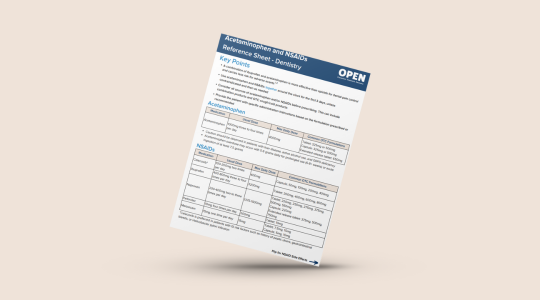Learn more about prescribing acetaminophen and NSAIDs for pain management after dental surgery.

Cite this work:
OPEN: Overdose Prevention Engagement Network (2024). Acetaminophen and NSAIDs Reference Sheet – Dentistry. Retrieved from https://doi.org/10.56137/OPEN.000017